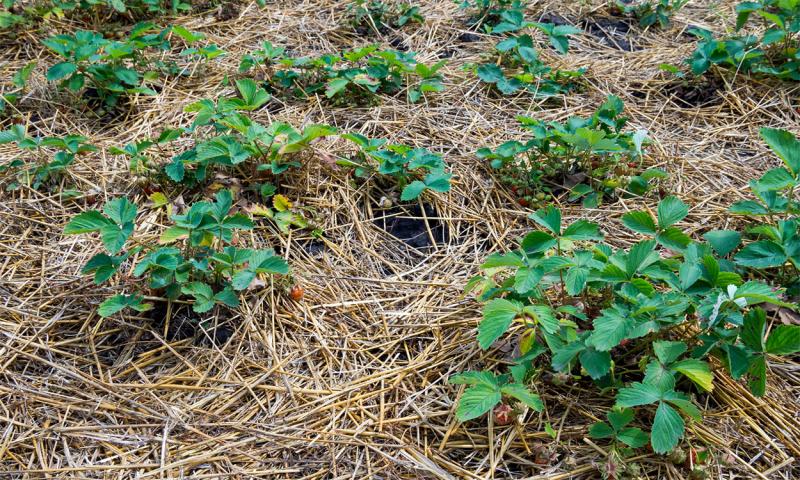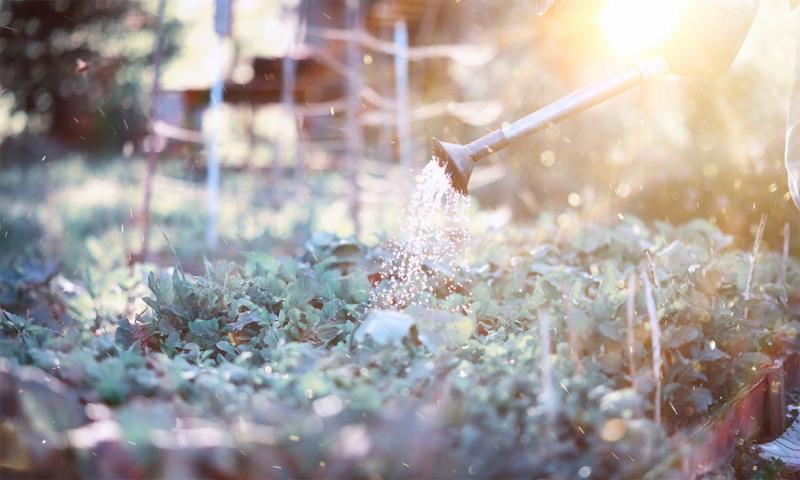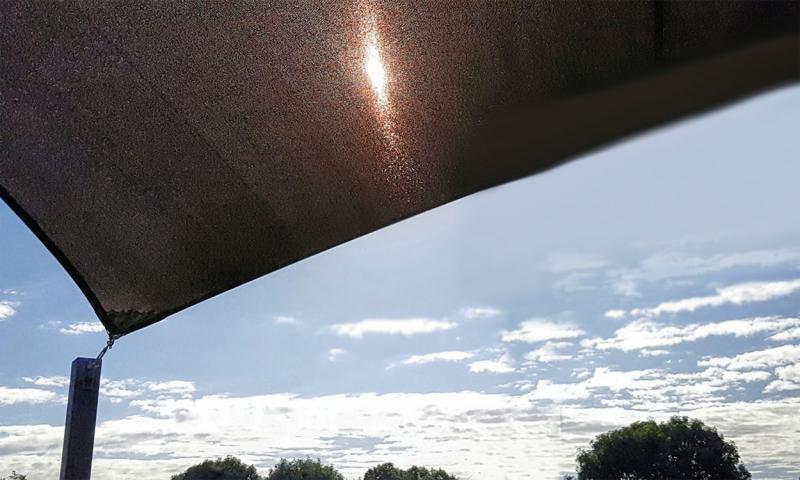Written by Cindy Schnabel, SDSU Extension Horticulture Assistant and Master Gardener, under the direction and review of Kristine Lang, SDSU Assistant Professor and Consumer Horticulture Extension Specialist.
When temperatures reach well above the 90s with no real sign of a break, it is hard on humans and plants. Man cools off by finding shade, setting up a fan or finding an air-conditioned house. Plants are stationary. They must deal with whatever nature dishes out. Here are some tips that will help protect plants from heat stress.
Air and Soil Temperatures

Plants have optimal temperatures they thrive in, so when outside temperatures exceed that, vegetation will start showing signs of stress. When signs of stress are present, leaves will wilt, curl or burn. Cool-season annuals are especially susceptible to damage during hot, summer months, and they will likely stop flowering, go dormant or die out entirely. As the sun beats down, it increases the soil temperature, which also contributes to the heat stress in a plant. To lower the temperature, a layer of four-to-six inches of straw, pine needles, leaves or grass clippings will help.
Also watch for vegetables dropping blossoms in times of high heat. Plants, such as tomatoes, peppers, squash, melons, cucumbers, beans and even pumpkins, are notorious victims. Cool-season crops, such as broccoli, will bolt. Check your vegetables and fruits regularly. Harvest the produce promptly! This saves plant energy, and your crop is less likely to be overripe.
Water and Fertilizer

Overly dry soil is a sure sign that plants will develop heat stress. Water is essential for plants to live. During a heat wave, correct watering is even more important. Early-morning or early-evening watering is the best time to provide moisture to all your plants in the garden or landscape. If overhead watering is done during the midday, most of the water will evaporate before it gets to the roots. Use a soaker hose or drip irrigation to direct water right into the soil and avoid loses from evaporation.
Deep watering two to three times a week is ideal. The goal is to get the equivalent of one inch of rainfall on garden soils each week. Note: Container gardens will likely require daily watering during hot, dry conditions.
Too much water is just as bad as too little water. So, before watering, feel the soil first. If it is wet, don’t water. Overwatering deprives the roots of oxygen, which can lead to root rot or fungal diseases.
When you have a heat wave, stop fertilizing. Without adequate water, fertilizing could cause damage to plant tissues. A sudden flush of nutrients signals to the plant that it is time to grow. It is dangerous and stressful for the plant during soaring temperatures, because new growth is more-susceptible to the effects of heat damage.
Providing Shade

During prolonged periods of hot weather, temporary shading can reduce temperatures and prevent sunburn on your plants. Remember, avoid prolonged shading of fruits, vegetables and sun-loving annuals when temperatures normalize and days start to shorten. Here are some ideas for temporary shade:
- Patio Umbrella: Use in a small area.
- Shade Sail: Best if used in areas between houses, trees or a shed.
- Row Cover: Light enough to drape over the plants. Delicate plants will need support hoops to keep the fabric from breaking or damaging the plants.
- Gunny Sacks: Find stalks or a small garden fence, and place the sacks in such a way that they act like a curtain to block out the rays.
Special thanks to SDSU Extension Master Gardeners Tim Schreiner and Stacy Dreis for serving as volunteer copyeditors of this article.


